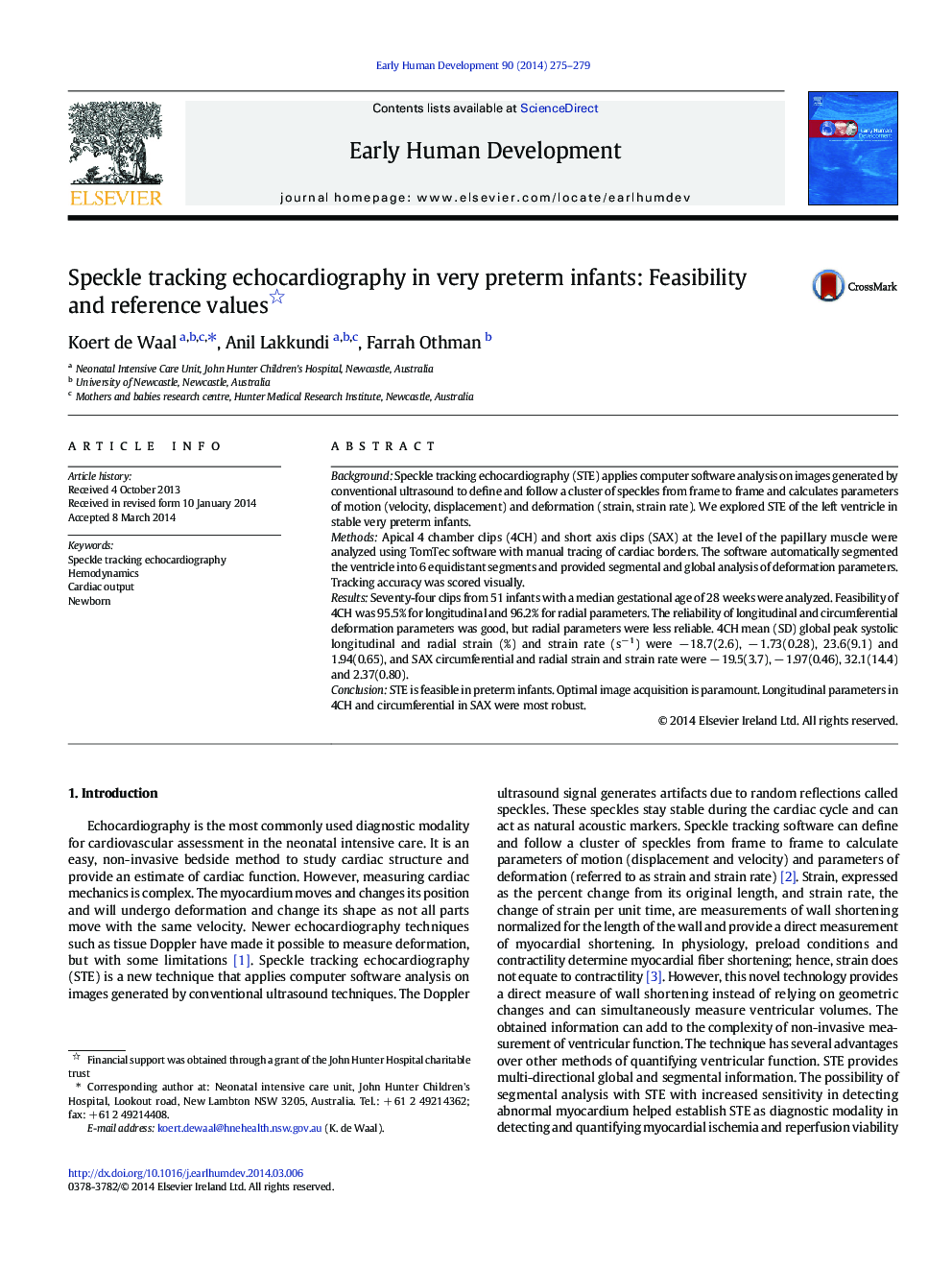| Article ID | Journal | Published Year | Pages | File Type |
|---|---|---|---|---|
| 3917049 | Early Human Development | 2014 | 5 Pages |
BackgroundSpeckle tracking echocardiography (STE) applies computer software analysis on images generated by conventional ultrasound to define and follow a cluster of speckles from frame to frame and calculates parameters of motion (velocity, displacement) and deformation (strain, strain rate). We explored STE of the left ventricle in stable very preterm infants.MethodsApical 4 chamber clips (4CH) and short axis clips (SAX) at the level of the papillary muscle were analyzed using TomTec software with manual tracing of cardiac borders. The software automatically segmented the ventricle into 6 equidistant segments and provided segmental and global analysis of deformation parameters. Tracking accuracy was scored visually.ResultsSeventy-four clips from 51 infants with a median gestational age of 28 weeks were analyzed. Feasibility of 4CH was 95.5% for longitudinal and 96.2% for radial parameters. The reliability of longitudinal and circumferential deformation parameters was good, but radial parameters were less reliable. 4CH mean (SD) global peak systolic longitudinal and radial strain (%) and strain rate (s− 1) were − 18.7(2.6), − 1.73(0.28), 23.6(9.1) and 1.94(0.65), and SAX circumferential and radial strain and strain rate were − 19.5(3.7), − 1.97(0.46), 32.1(14.4) and 2.37(0.80).ConclusionSTE is feasible in preterm infants. Optimal image acquisition is paramount. Longitudinal parameters in 4CH and circumferential in SAX were most robust.
